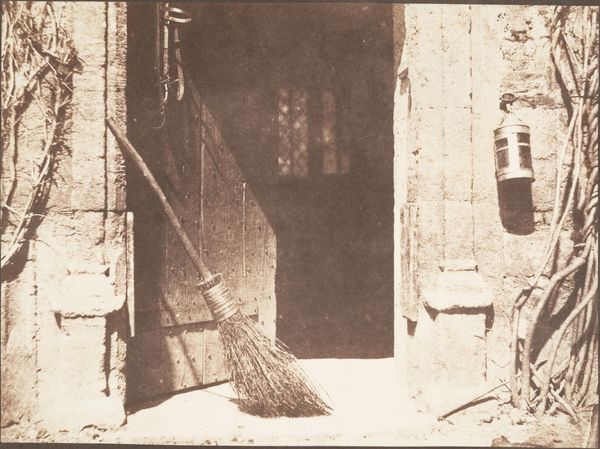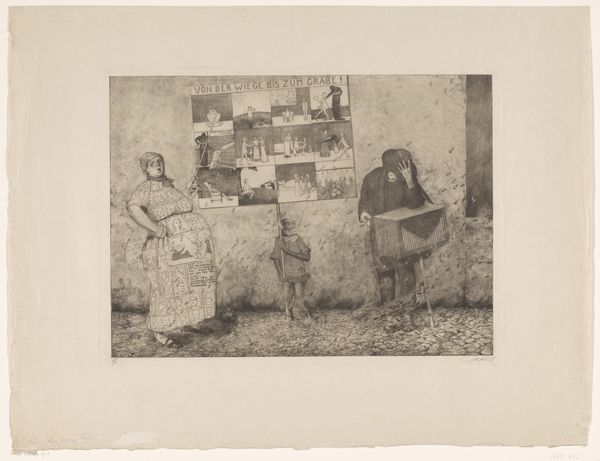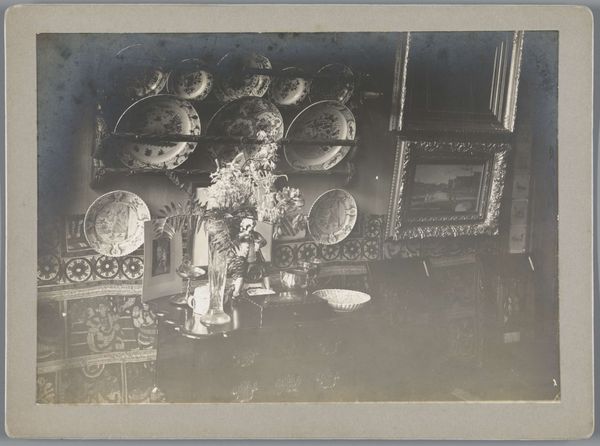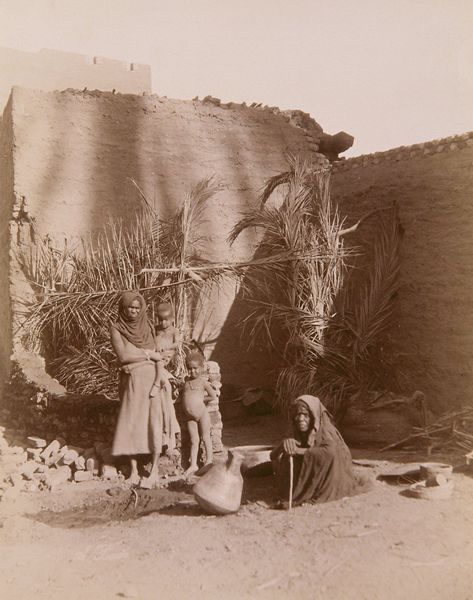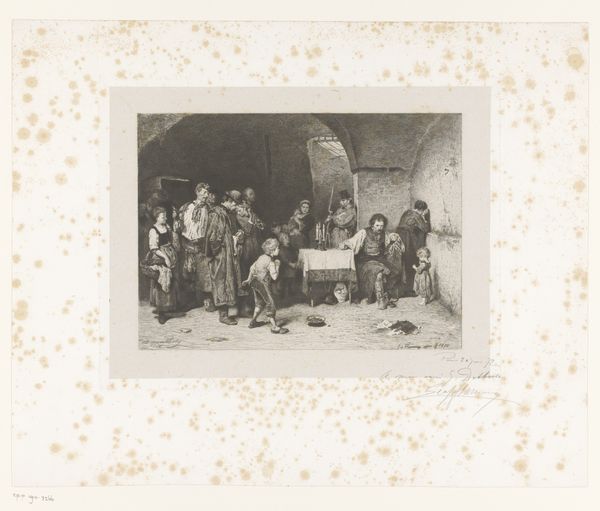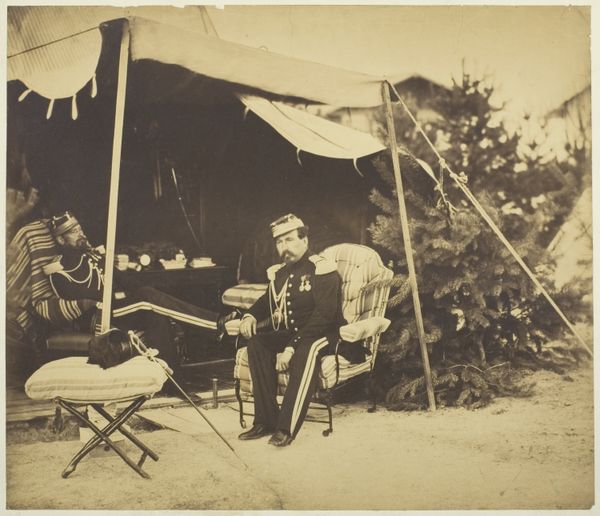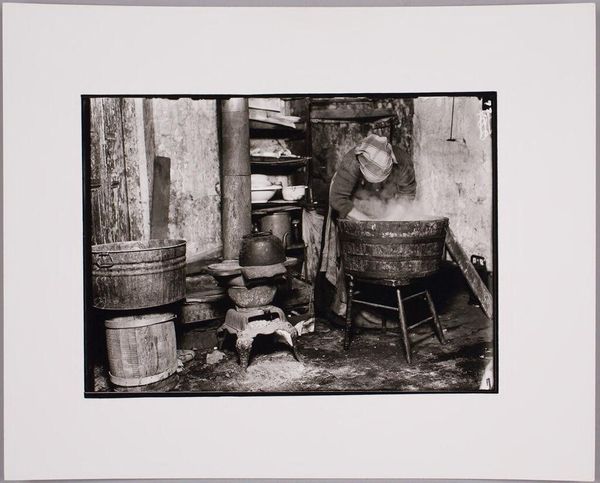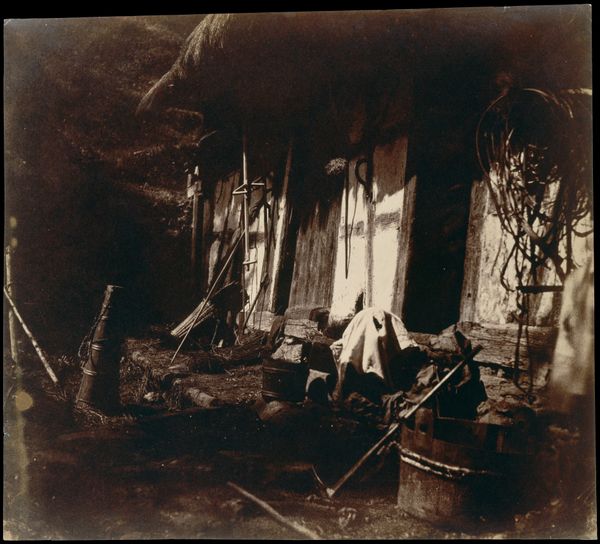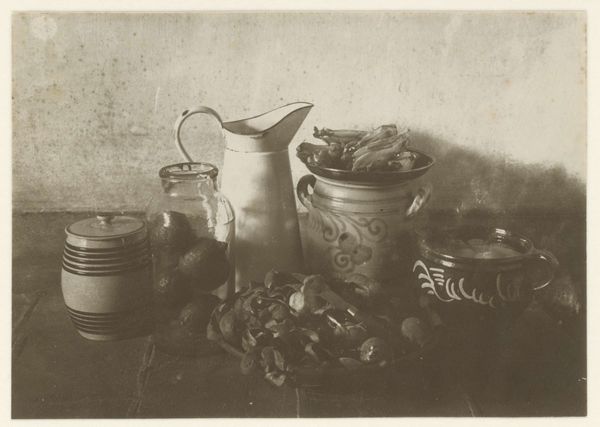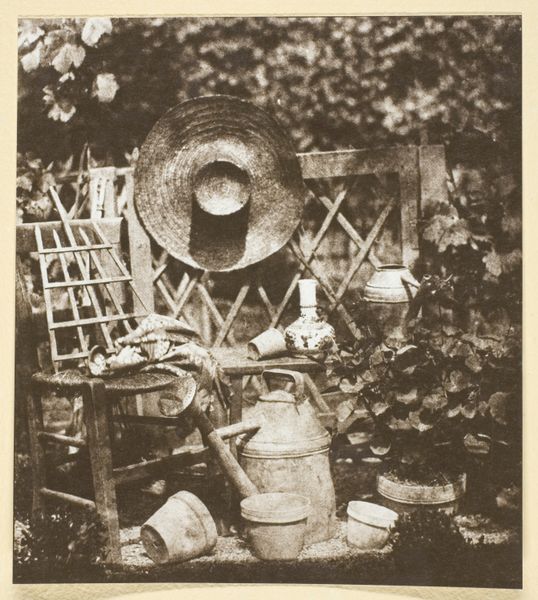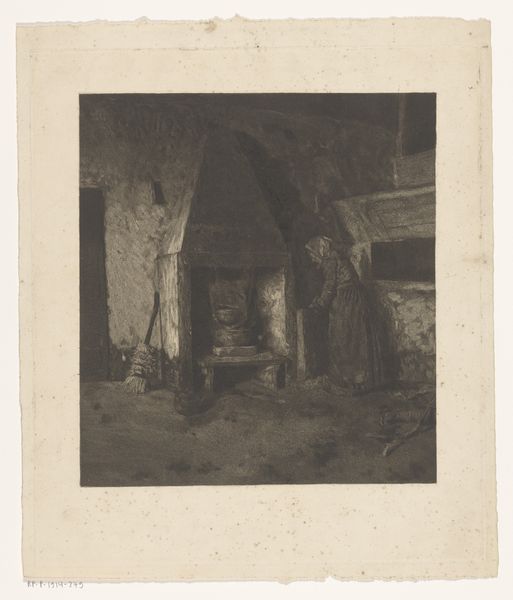
photography
#
photography
#
musical-instrument
Copyright: Public Domain
Editor: This is Thomas Mackinlay’s 1856 photograph, "Study for a Picture." It presents an arrangement of objects like musical instruments, ornate containers, and a helmet, captured through photography. The tonal range, somewhere between chocolate and coffee, seems intentional. How do you interpret the compositional structure of this image? Curator: Indeed, the tonal uniformity emphasizes the composition above all else. Note how Mackinlay contrasts textures: the soft drape of the cloth behind, set against the hard, reflective surfaces of the helmet and metalware. These contrasting elements play against one another to create depth within a relatively shallow space. This arrangement results in visual harmony through its play with dark and light and interplay of form and surface. Editor: So the contrast between those elements—the hardness, the softness—helps organize the piece and give it harmony? Curator: Precisely. Look at the mandolin. Its placement is no accident; its curves echo those of the helmet, unifying the objects through a shared visual language. Consider too, the direction of light. From where does it seem to originate, and how does it contribute to the picture’s effect? Editor: It’s coming from the upper left. The light really defines the edges of the objects, separating each item while also emphasizing its texture. Curator: It does. Now consider, what if the light source were to shift? What elements would then be emphasized? Editor: Hmm, interesting. The reflective qualities might change the entire visual balance. I focused initially on subject matter and mood, but you have illuminated the significance of light and texture in forming its aesthetic. Curator: To analyze form is to appreciate function. What starts as art becomes craft.
Comments
No comments
Be the first to comment and join the conversation on the ultimate creative platform.

